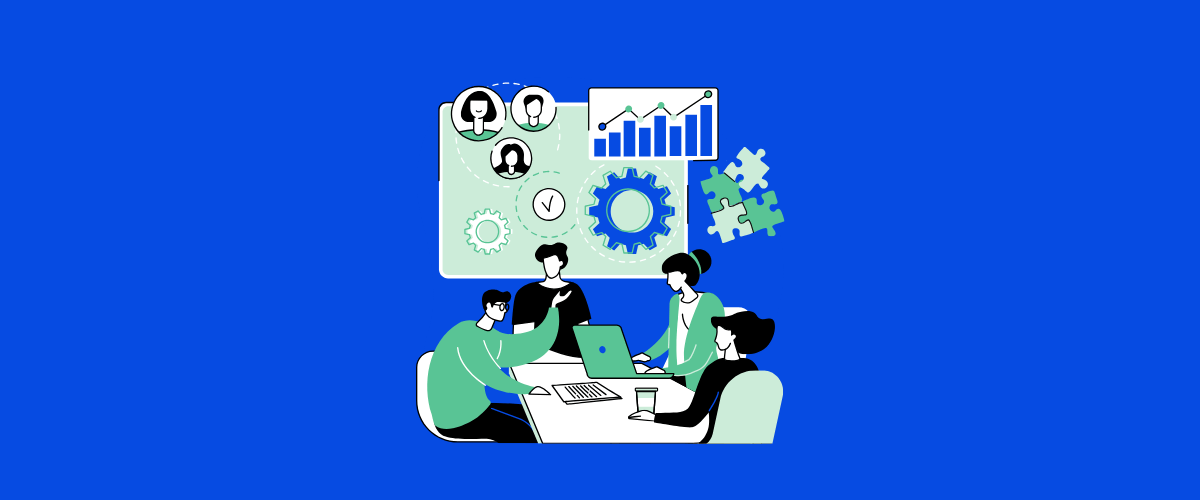What determines the success of a project? Practically everyone who runs his or her own project wants to know the answer to this question. However, there is no one right answer. The success of a project depends on many factors, including the team that is working on it. Let’s discuss how to build a successful development team that will lead your project to success.
It is first important to determine the right team-building strategy. There is no need to act erratically. Here are the important steps to follow when building a successful team.
Table of Contents
Target definition
Set clear goals, correctly determine tasks, and set deadlines to help your team remain focused on the end result. The project’s goal also determines which specialists are needed and in what quantities.
Determining the size and formation of the team
When determining the size of your team, you need to understand that more does not mean better. According to HackerLife, the optimal size is four to six people. Ringeln’s experiment confirms this: The more people who work on achieving a single goal, the less they contribute to the overall result. Thus, the performance of each individual team member is reduced. Naturally, the size of the team is directly proportional to the size of the project (i.e., for a large and long-term project, more specialists will be needed). Lack of communication, loss of motivation, and lack of control can lead to loss of productivity, so this should be taken into account.
As a rule, the team structure will always consist of the main actors:
- Project manager: A person who has the overall responsibility for the successful initiation, planning, execution, monitoring, controlling, building communication between team members, and closure of a project.
- Developers/engineers: Specialists with the required skills and expertise for the project.
- UI/UX designer: A specialist who creates a visual picture from concept to product launch.
- QA manager: A person who is responsible for the flawless operation of all functions of the product, the compliance and cleanliness of the design, the absence of bugs and gaps, and the smooth operation of all devices, browsers and operating systems, etc.
Definition of roles, functions, and responsibilities and the distribution of work
The team must have the necessary specialists for the realization of the specific goals of the product. Having a team of specialists with similar work skills will result in a loss of motivation and lack of productivity. If we are talking about a remote team, then the most effective method will be the formation of a development team around a lead specialist. The lead specialist can adequately distribute duties and workload and will be able to control the coding process, the application of the most optimal technologies, and the implementation of functions as well as determine if there is a real need to attract additional specialists or reduce the existing number.
Therefore, the formation of a technical team should start with the lead; and it is more efficient to hire an existing team that has collaboration experience and real, ready-made projects in order to not waste time on experiments with adaptation and overlap. Remember, the quality and success of your product depends on how the development teams work.
Organization of effective communication
Streamlined team communication is the key to achieving goals as quickly as possible. The trust relationship among the team members will be transferred to the project. You should be interested in establishing such an atmosphere among your team.
If you plan to involve remote specialists in the project development, then hiring an already existing team will be the most effective solution. In this case, you should participate in the communication with the team so you know who exactly will work on your project. Get to know each member of the team in person. Short interviews will help you evaluate not only technical skills but also the personal characteristics of specialists. Praise and recognize the team and the individuals who demonstrate the best results, raise morale, and encourage better results.
Agile methodology
When forming a team, make sure that it is ready to work using the Agile methodology. This is the most effective practice of organizing a development process that aims to minimize risks by reducing the development to a series of short cycles called iterations, which usually last two to three weeks. This allows for a more flexible approach to the process of developing and solving current issues. This methodology is most effective when the team is in the same office, which in turn suggests that it is better to hire a well-coordinated team than to form it yourself from independent specialists.
Summing up
The construction strategy described is nothing but the creation of the most effective team model, called the 7T. This model suggests that for a team’s high performance, there are seven important factors:
- Thrust: Focusing on the essence, this is a common desire for what should be done by the team.
- Trust: Among the team members
- Talent: The abilities of the team members
- Team Skills: The ability to effectively and productively act as a team
- Task Skills: The successful execution of tasks assigned to the team
- Team Leader Fit: The degree to which a leader meets the needs of team members
- Team Support: A measure in which the owner of the product allows the team to express themselves
Leadership compliance and team support are external factors that you can use to influence and increase work efficiency. Forming a successful mobile app development team will help you get a high-quality and successful product.





